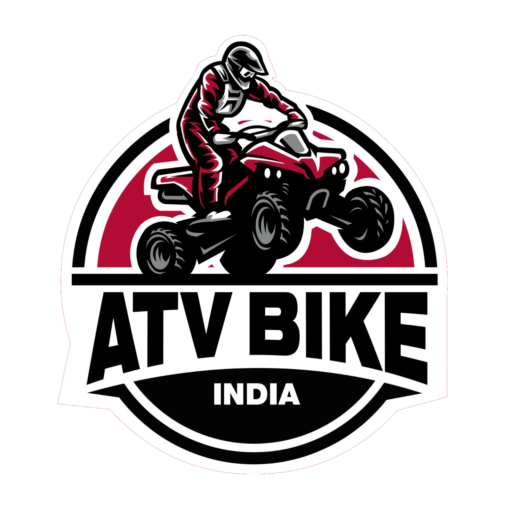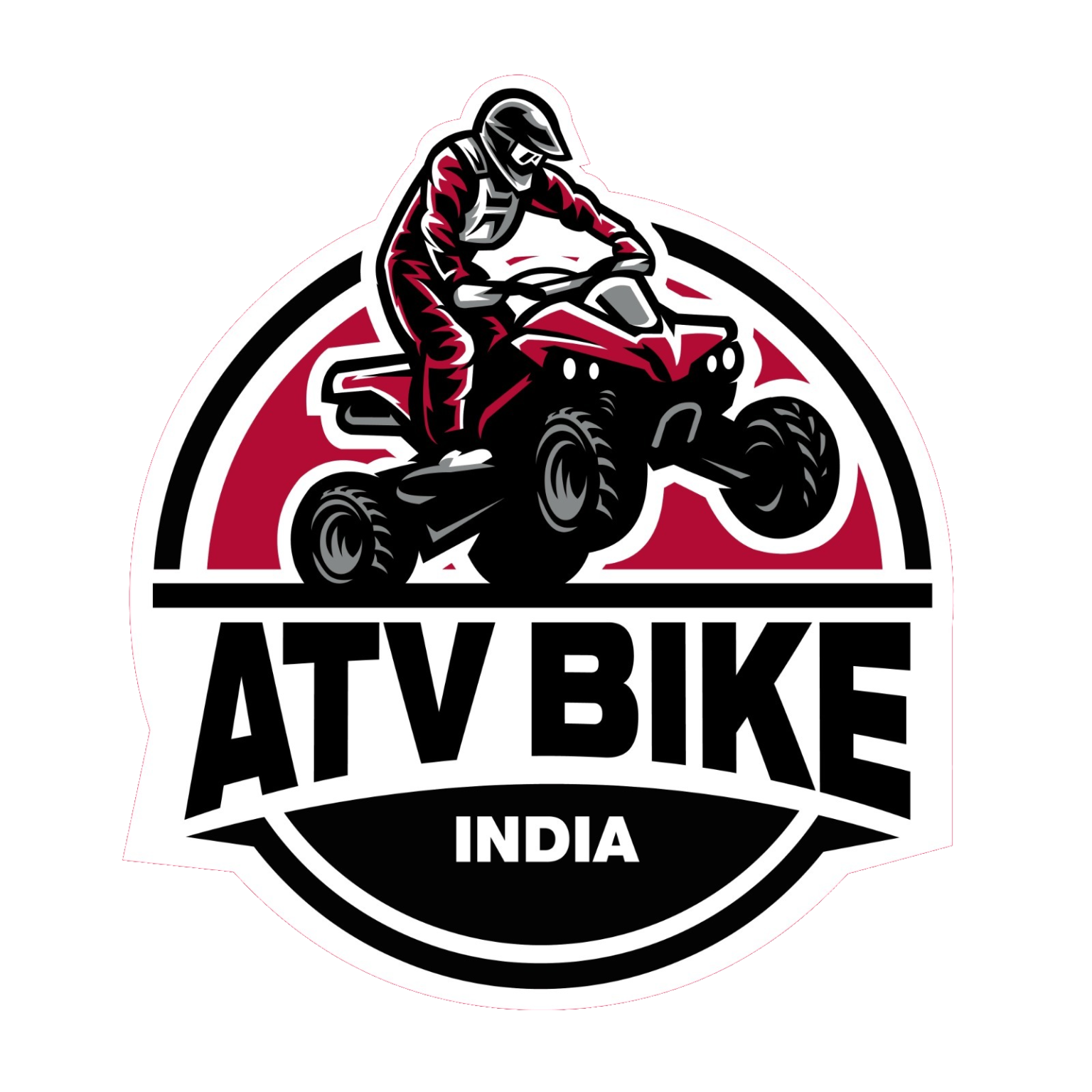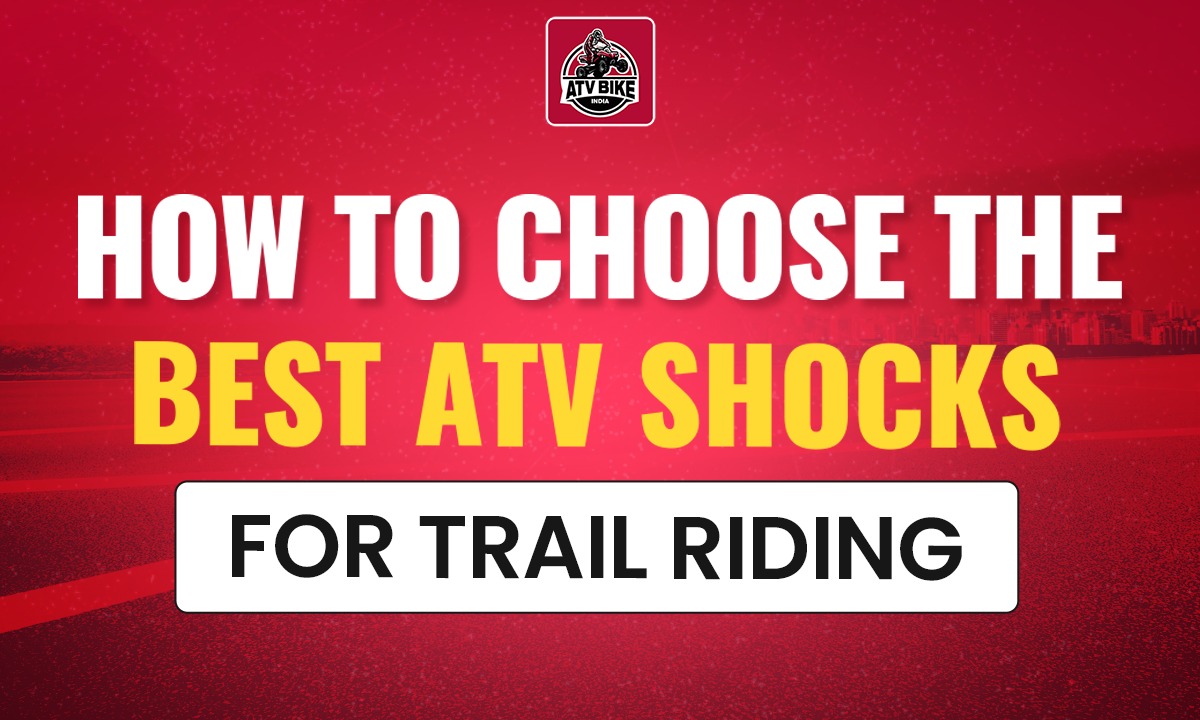Think your ATV’s shocks are just there for a bump-free ride? Think again! Your shocks play a vital role in everything from comfort to control on the trails. Choosing the right shocks is critical for both adults and for ATV bikes for kids, but don’t worry – there’s no single “best” option. The perfect shock depends on your personal riding style and where you love to ride. In this blog, we will discuss in detail how you can choose the best ATV shocks for trail riding.
Assess Your Trail Riding Needs To Choose the Best ATV Shocks
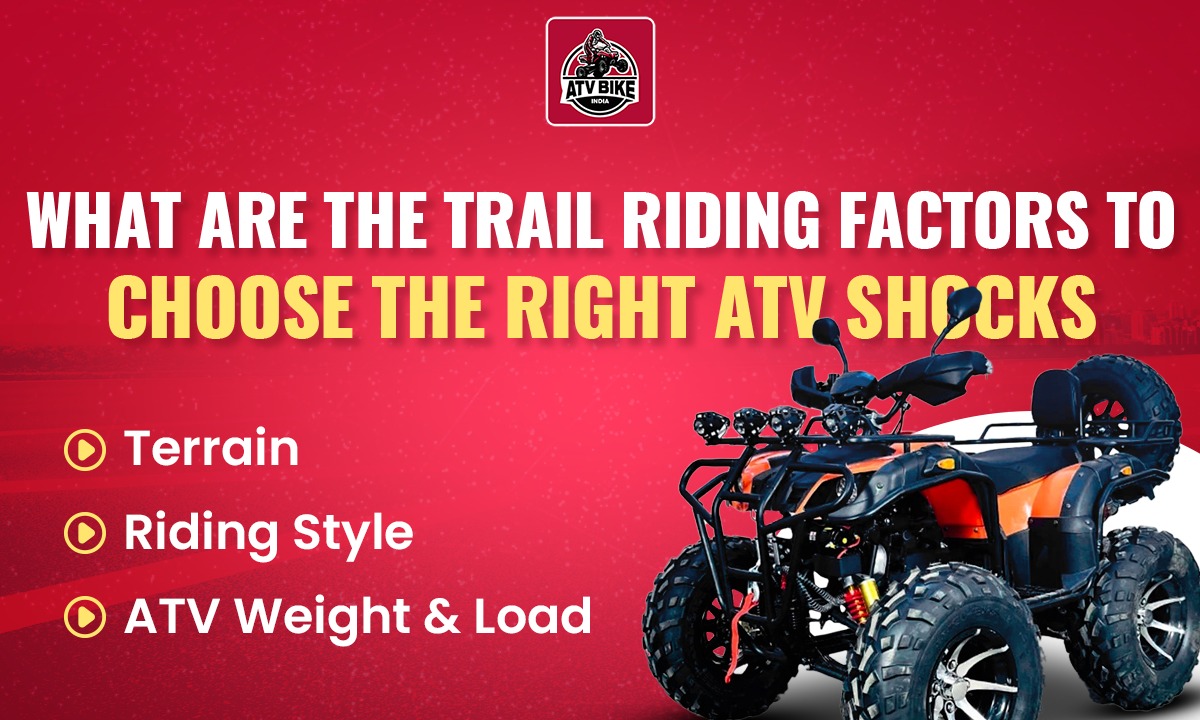
Terrain
The type of trails you frequently ride will significantly dictate the ideal characteristics of your ATV shocks. Consider these specific terrain challenges:
- Rough & Rocky: Prioritize shocks with ample travel and bottoming-out resistance. Longer shock travel allows your wheels to better articulate over obstacles, keeping them in contact with the ground for traction. Seek shocks with either stiffer springs or adjustable compression settings that prevent them from bottoming out harshly on big hits.
- Smooth & Fast: Emphasize responsiveness and high-speed damping for controlled handling. On smoother trails, your priority shifts from soaking up harsh impacts to maintaining composure at speed. Look for shocks that react quickly to changing surfaces and offer adjustable high-speed compression damping. This ensures your ATV remains stable and doesn’t bounce uncontrollably while navigating high-speed bumps or sweeping corners.
- Mud & Sand: Consider shocks designed to cope with wallowing and maintain stability. Soft terrain like mud or sand requires a different approach. Shocks with adjustable rebound damping can help slow the shock extension after compression, preventing a bouncy feeling and maintaining control. Valving that’s tuned for these conditions helps the ATV feel more planted and improves traction.
Riding Style
Your riding style has a massive influence on the ideal shock setup. Consider these two contrasting styles as a starting point:
Aggressive & Sporty
If your definition of a good time on the trails involves high speeds, big jumps, and pushing your ATV to its limits, then adjustability is your best friend. Look for shocks that offer both:
- High-speed Compression: These adjustments control how the shocks react to sudden large impacts, essential for smooth landings and maintaining control when hitting unexpected bumps at speed.
- Low-Speed Compression: This adjustability lets you dial in how the shocks behave over smaller bumps, chatter, and rolling terrain, allowing you to refine the feel and control of your ATV.
Casual & Recreational
When a relaxing cruise, exploring diverse terrain, or a mix of work and play are your goals, prioritize plushness and a comfortable ride. Shocks that offer adjustable preload for matching your weight and load are helpful. While high-end, multi-way adjustable shocks might be overkill, even a basic shock upgrade with rebound damping adjustments can significantly improve your experience compared to stock shocks.
ATV Weight & Load
Consider the combined weight of your ATV, yourself, any gear, and potential passengers (if riding a 2-up model). The correct spring rates and shock adjustments are crucial for balanced performance and handling.
Too Soft
If your shocks are too soft for your total load, you’ll experience:
- Excessive bottoming out on bumps, which is harsh and can damage components.
- Sagging ride height, making the ATV feel unstable and reducing ground clearance.
- Poor handling as the suspension won’t react quickly enough to your inputs.
Too Stiff
On the other hand, overly stiff shocks will:
- Create a harsh, jolting ride that sacrifices both comfort and traction.
- Prevent the suspension from fully compressing, reducing the tire’s ability to maintain contact with uneven terrain.
- Put excess stress on your ATV’s suspension components.
Adjustability is Key
Many quality shocks offer preload adjustment, allowing you to increase spring tension for heavier loads. Some advanced models offer separate compression adjustments affecting how the shock behaves during different parts of its travel, giving you even greater fine-tuning potential.
Types of Best ATV Shocks for Trail Riding
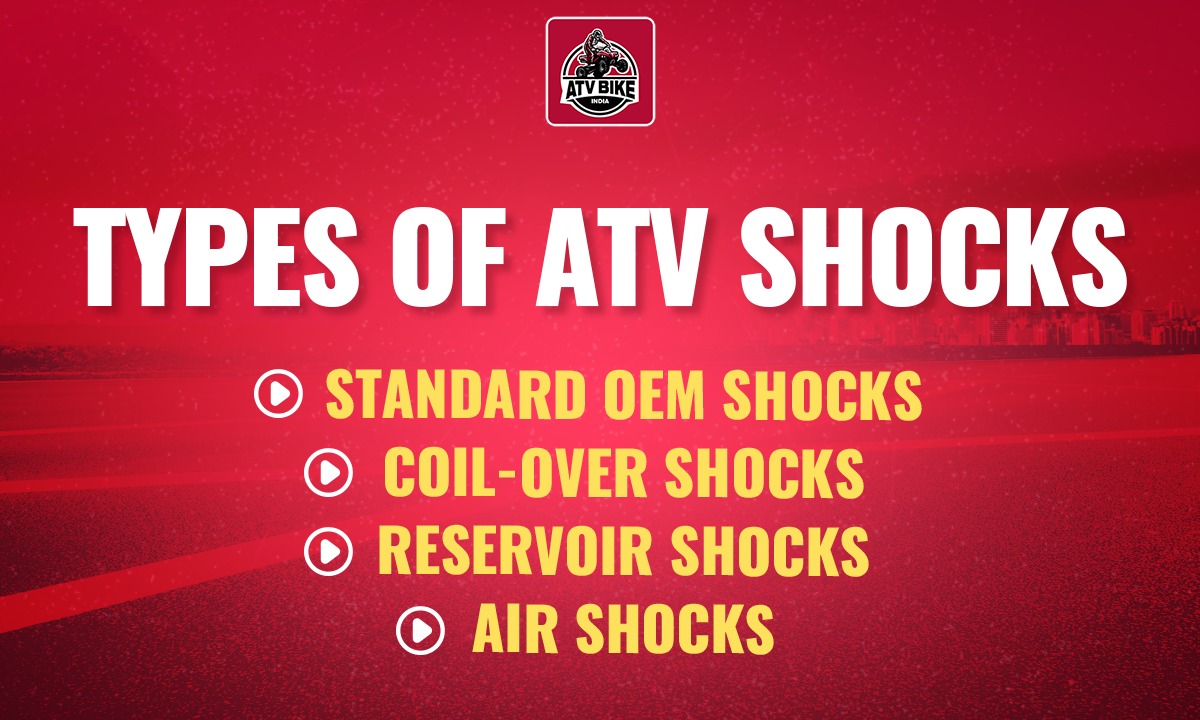
Standard OEM Shocks
The original shocks on your ATV offer a baseline, but they often prioritize cost over performance. Most have limited or no adjustability, which means they’re designed for average riders and typical terrain. If you’re a casual rider sticking mostly to well-maintained trails, the basics might be enough, but as your skills progress or you encounter more challenging trails, you’ll likely crave an upgrade.
Coil-Over Shocks
A common first upgrade, coil-over shocks provide the fundamental benefits of an aftermarket setup at a reasonable price point. Most offer adjustable preload, letting you tune the ride height and initial stiffness of the spring to suit your load. Some also feature rebound damping adjustment, affecting how quickly the shock returns after being compressed, giving you more control over the ride feel.
Reservoir Shocks
Benefits
Reservoir shocks offer significant advantages in performance and adjustability. The reservoir (external chamber connected to the shock) holds extra oil and houses a separating piston. This design improves heat dissipation, crucial for preventing shock fade on rough trails or extended rides. Additionally, they typically offer a wider range of adjustment – including both rebound and compression damping for dialing in the precise ride feel you want.
Options
- Piggyback Reservoir: The reservoir is directly attached to the shock body, saving space.
- Remote Reservoir: The reservoir is connected via a hose, allowing greater flexibility in placement. Often preferred on performance builds, offering better cooling and even more adjustability options in some cases.
Air Shocks
These technologically advanced shocks replace traditional coil springs with an air chamber. A key benefit is extreme adjustability by modifying air pressure. However, this comes with a trade-off: Air shocks generally require more frequent maintenance to check for leaks and are more susceptible to performance changes with temperature variations. These are often best suited for experienced riders who want the absolute pinnacle in customization and don’t mind the added complexity.
Importance of Adjustability of ATV Shocks for Perfecting Your Ride

While the correct springs are vital for supporting the base weight of you and your ATV, adjustments let you fine-tune the way those shocks react to every bump, turn, and change in terrain.
Preload
This impacts the ride height and affects how much initial force is needed to start compressing the shock. Increasing preload stiffens the initial part of the travel, which helps prevent bottoming out under heavy loads and can increase ground clearance. However, too much preload reduces ride plushness. Finding the right balance is key.
Rebound Damping
Adjusts how quickly the shock extends back to its full length after being compressed. Slower rebound creates a more controlled feel, preventing the ATV from feeling bouncy or unsettled over consecutive bumps. Faster rebound gives a more lively and responsive ride but can sacrifice traction if it’s too quick.
Compression Damping
This is where customization gets serious! Most quality shocks offer separate low-speed and high-speed compression adjustments:
Low-Speed
Influences how the shock reacts to minor bumps, rolls, and rider input like shifting your weight. Increasing low-speed compression adds firmness for smoother cornering and reduces body roll on a sports ATV.
High-Speed
Critical for handling major hits, jumps, and preventing harsh bottoming out. Increasing high-speed compression adds resistance to those rapid, big impacts.
Budget and Maintenance of the Best ATV Shocks for Trail Riding
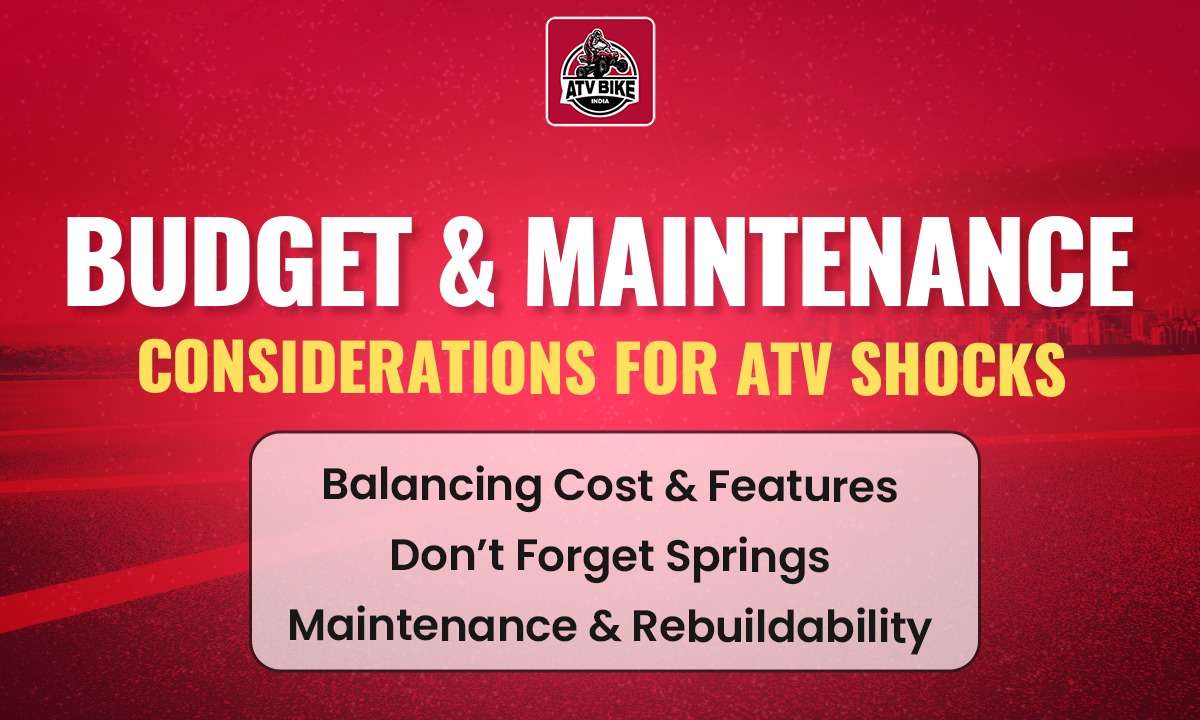
Investing in quality shocks goes beyond the initial purchase. It’s essential to consider the balance of features vs. price alongside long-term ownership costs to make informed decisions that will benefit your riding for years to come.
Balancing Cost & Features
Be realistic about your needs and how much adjustability you truly need to improve your ride. Premium shocks offer a wide range of adjustments, but if you don’t often encounter radically different terrain or aren’t obsessed with fine-tuning the feel, a simpler and more budget-friendly shock might be a better match. On the flip side, if you’re an aggressive rider or crave precise control, spending more on top-tier adjustable shocks often pays dividends in performance and satisfaction.
Don’t Forget Springs
Shocks and springs work in harmony. Upgrading shocks without considering the proper spring rate limits the benefits you’ll gain. Consult with the manufacturer of your chosen shocks to ensure you pair them with springs designed for your ATV model, weight, and riding style. This often means buying springs separately, factoring into the overall cost.
Maintenance & Rebuildability
Shocks, especially with complex setups, will experience wear and tear. Oil seals degrade over time, and internal components experience friction-related wear. Cheaper shocks are often sealed units, requiring complete replacement. High-quality shocks are often rebuildable by specialists. While rebuilds have a cost, they extend the shock’s lifespan significantly, potentially saving money in the long run compared to multiple replacements.
Choosing the Best ATV Shocks for Trail Riding is an Investment
Choosing the right ATV shocks isn’t just about buying the most expensive option with the fanciest features. It’s an investment in your enjoyment, safety, and overall performance on the trails. Upgrading your shocks transforms your ATV from a machine that simply gets the job done into a powerful and responsive tool that conquers trails with confidence.
Remember, the “best” shock is the one perfectly suited to you. Take the time to honestly assess your riding style, the trails you frequent, and your budget. Do your research, consult online resources, talk to ATV experts like ATV Bike India, and carefully consider the options available.
By understanding your needs and the differences between shock types, you’ll be well on your way to experiencing the incredible difference a quality suspension setup can make on any trail adventure. Don’t rush the process – the rewards of finding your perfect setup will make those extra hours of research worthwhile.
